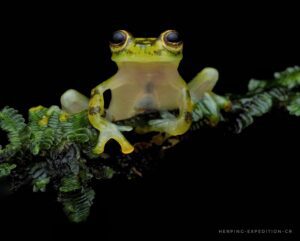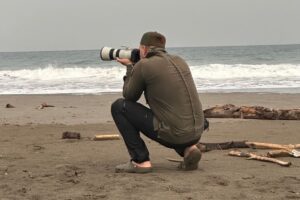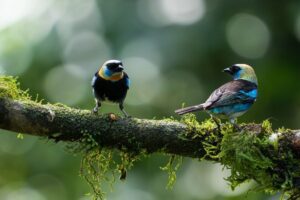Embarking on a photography tour in Costa Rica is one of the most rewarding experiences for any nature, wildlife, or landscape photographer. The country is a haven of biodiversity, dramatic scenery, and vibrant culture, but to get the most out of your trip, preparation is key. From camera gear to clothing, logistics to mindset, here’s everything you need to know to prep for a Costa Rica photography tour.
1. Understand the Destination
Costa Rica is home to more than 500,000 species of wildlife, with diverse ecosystems ranging from rainforests and cloud forests to mangroves, volcanoes, and coasts. Expect humid conditions, frequent rain, strong sunlight, and varied terrains. Knowing the regions you’ll visit (e.g., Monteverde, Sarapiquí, San Gerardo de Dota, Boca Tapada, Caño Negro, or the Osa Peninsula) will help you prepare both your gear and your mindset.
- Rainforests & Lowlands: Frogs, snakes, monkeys, toucans, and lush flora.
- Cloud Forests: Resplendent quetzals, orchids, misty landscapes.
- Wetlands & Rivers: Waterbirds, caimans, reflections, and low-light challenges.
- Beaches & Coasts: Sunsets, seascapes, turtles, and shorebirds.
2. Choosing the Right Gear
Camera and Lenses
- Camera body: DSLR or mirrorless with good weather sealing.
- Telephoto lens: 100–400mm or 200–600mm is essential for birds and mammals.
- Macro lens: Perfect for frogs, insects, and flowers.
- Wide-angle lens: Great for landscapes, waterfalls, and environmental shots.
- Standard zoom: 24–70mm or similar for versatile use.
Accessories
- Lightweight tripod or monopod
- Flash & diffuser (especially for macro)
- Polarizers and ND filters
- Rain covers and dry bags
- Silica gel packs to combat humidity
3. Clothing and Personal Gear
- Lightweight, quick-dry clothing
- Long-sleeved shirts & pants for sun and insect protection
- Rain jacket or poncho
- Hiking shoes or waterproof boots
- Sandals for downtime
- Bug repellent
- Headlamp/flashlight for night walks
4. Health and Safety Prep
- Check recommended vaccinations
- Travel insurance with medical evacuation
- First aid kit and personal medications
- Reusable water bottle and hydration salts
5. Packing and Travel Logistics
- Keep camera gear in carry-on luggage
- Use a waterproof camera backpack
- Know local flight weight restrictions
- Costa Rica uses 110V (US plugs) – bring adapters
- Pack enough chargers and batteries
6. Photography Challenges & How to Prep
- Low light: Use fast lenses and tripods.
- Rain/humidity: Rain covers and dry cloths are essential.
- Fast-moving subjects: Practice with birds and wildlife at home.
- Dense forests: Use depth of field and framing techniques.
- Patience: Be prepared to wait for the perfect shot.
7. Cultural and Ethical Considerations
- Respect wildlife and avoid stressing animals.
- Support local communities and eco-lodges.
- Learn a few Spanish phrases.
- Ask permission before photographing people.
8. Mental and Creative Preparation
- Set personal photography goals.
- Research local species and behaviors.
- Practice with your gear before traveling.
- Stay flexible – weather and wildlife are unpredictable.
9. Must-Have Shots Checklist
- Hummingbird in flight
- Macro of a colorful frog
- Waterfall with silky long exposure
- Sunrise or sunset over jungle or beach
- Resplendent quetzal
- Monkeys or sloths
- Volcanic landscapes
- Night macro or astrophotography
10. Final Tips Before Departure
- Double-check memory cards and backups
- Pack snacks for long days in the field
- Confirm your itinerary with your tour leader
- Prepare for early mornings (5 a.m. starts are common)
- Enjoy the journey – it’s about more than just the photos
Conclusion
With the right preparation, you’ll not only return home with incredible photographs but also unforgettable memories of Costa Rica’s natural beauty and culture. For private, custom, all-in-one workshops, consider booking with Physis Photo Tours, led by Andy Bezara, to make your Costa Rica photography adventure truly extraordinary.
FAQs: Costa Rica Photography Tours
What’s the best time of year for a Costa Rica photography tour?
Year-round is good. Dry season (Dec–Apr) = more sun and easier logistics. Rainy/green season (May–Nov) = morning sun, afternoon showers, lush scenery, dramatic skies, fewer crowds. Plan key shoots for dawn/dusk in both seasons.
How does weather differ between dry and rainy seasons?
Dry: Sunnier, clearer roads/trails, harsher midday light. Rainy: Morning windows, afternoon showers, richer greens, active amphibians. Always pack rain protection for you and your gear.
What should I expect in highlands vs. lowlands?
Highlands (cloud forests): Cooler, mist, soft light, quetzal habitat. Lowlands (rainforests/wetlands): Hot, humid, wetter year-round, abundant tropical species. Adjust clothing and gear accordingly.
Which lenses should I bring?
Telephoto 100–400mm or 200–600mm (birds/mammals), macro 90–105mm (frogs/insects), wide 14–24/16–35mm (landscapes/waterfalls), and a 24–70mm (general use). If weight is tight, prioritize telephoto + macro.
Do I need a flash and diffuser for rainforest macro?
Yes. Rainforests are dim. Use a TTL/manual flash with a soft diffuser at low power (≈1/32–1/16) for crisp detail and clean catchlights. Skip flash for light-sensitive species or when guides advise against it.
How do I protect camera gear from rain and humidity?
Carry compact rain covers, dry bags, and silica gel. Let gear acclimate in a sealed bag when moving from AC to humid air. Wipe condensation before lens changes; store with airflow back at the lodge.
Is a tripod necessary, or will a monopod do?
Bring a lightweight carbon tripod for waterfalls and low light. A monopod or strap often beats a tripod on tight trails or for birds-in-flight. Many hides/platforms accept tripods.
What health, safety, and insurance basics should I cover?
Closed-toe hiking shoes, long sleeves/pants, repellent, light rain jacket, personal meds/first-aid. Purchase travel insurance with medical evacuation. Follow guides and keep respectful wildlife distances.
What power and charging should I plan for?
110V Type A/B (US-style) outlets. Bring spare batteries, a multi-port USB charger, and a compact power strip for camera bodies, flashes, and lights. Some remote lodges have limited outlets.
Can Physis Photo Tours customize a private workshop?
Yes. Physis Photo Tours, led by Andy Bezara, builds private, custom, all-in-one photography workshops across Costa Rica—tailored to your dates, targets, skill level, and preferred regions.






